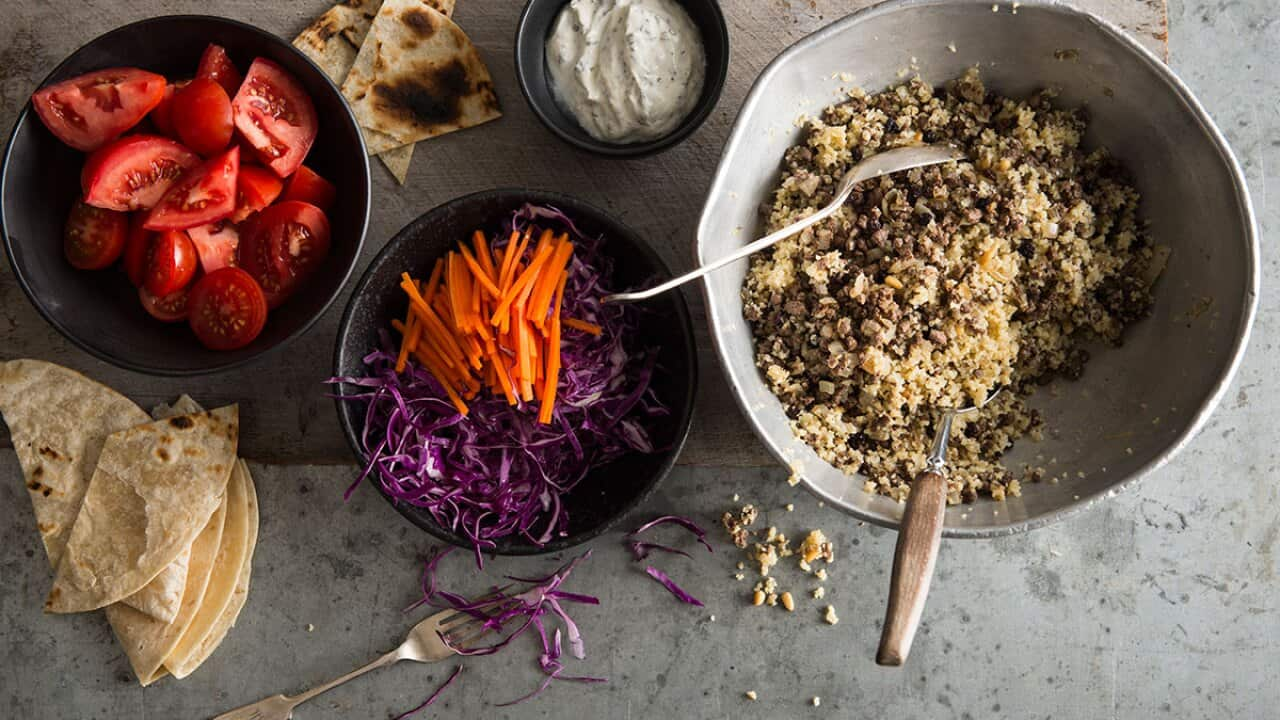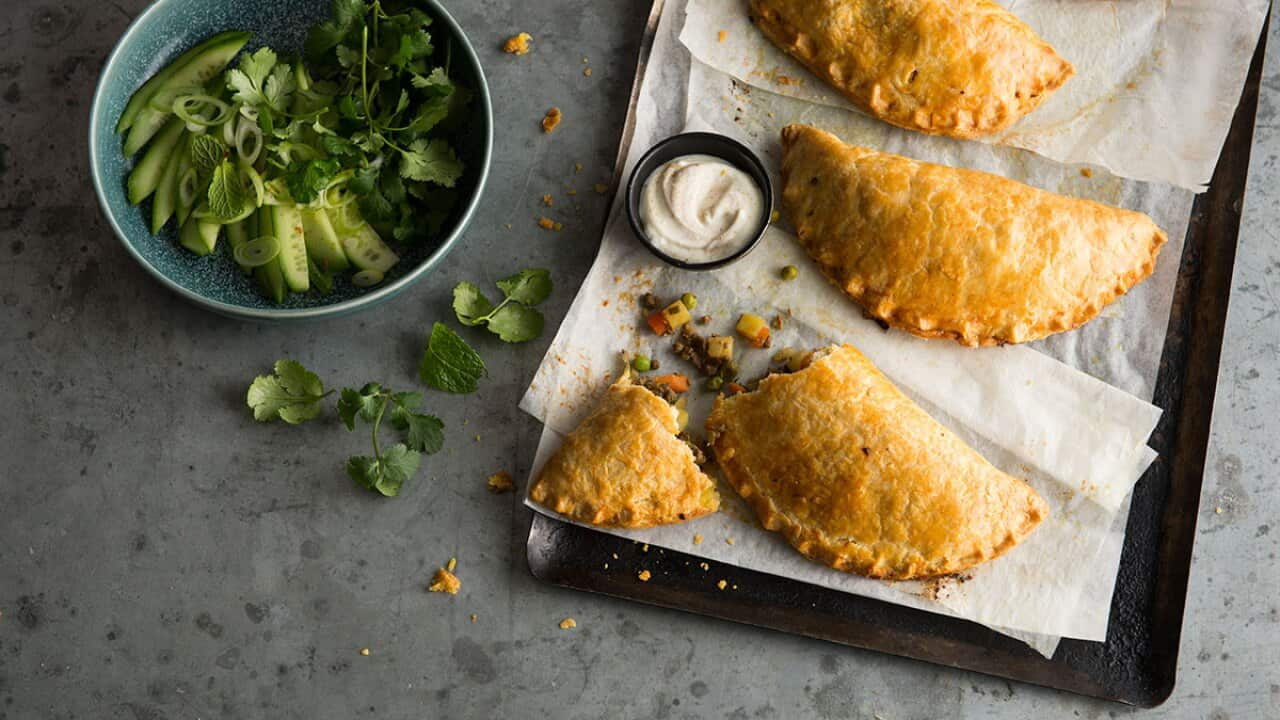If you want to eat meat, but do it in a way that treads a bit lighter on the earth, the issue becomes what should you buy? In a perfect world, we’d only have farms that met your personal, ethical standards. In a perfect world, there’d be no or few carbon emissions from livestock. In an ideal society, you could just buy food, anywhere at any time, that had considered the welfare of the animals, the farmers and the planet that supports them all.
But we live in reality, so a few simple truths can help demystify some very complex topics.
Let’s take the meats one at a time.
Chicken
In a chicken shed, there can be up to 40kg of bird per square metre . Chickens for meat don’t live in cages (unlike some of their laying sisters), but space does matter. For a long time, we’ve worked harder and harder at confining chickens more and more, with some bad consequences for the birds, namely health issues, and possibly some mental issues.
So birds that have more space, and more to do, and a few other things that make their lives better, are the perfect option. So the minimum I could recommend are the RSPCA birds widely available in supermarkets, and now being rolled out in some chain takeaways. The best birds, from an environmental perspective, are certified organic, which eat grain that hasn’t been grown using pesticides and herbicides, and the birds free range. But they do use top notch organic grain that could, arguably, be eaten by humans. The problem is the supply of organic grain, in that system – and the cost.
In between are other options. Those willing to spend big on good tasting, free ranging, grass and bug eating chickens that are often used to improve soil in other farming systems, can buy ‘pastured’ chickens. And the widely available best option, from what I have seen, and learned, and heard, are certified free-range chooks. Check out the standards at FREPA to see if what you imagine is free-range compares to what they certify in reality. Most of these birds are pretty much the same variety – a white bird designed to grow fast and be relatively bland and tender. The longer these birds live, the more they move, and the more varied their diet, the better they taste. There are other birds, such as the Sommerlads variety, that taste even better, but these are as rare as, ahem, hen’s teeth. Make the most of the chickens you buy: Matthew's is a great way to use up leftover roast chicken.
Make the most of the chickens you buy: Matthew's is a great way to use up leftover roast chicken.

Source: Alan Benson
Pork
Oh, the poor pig. Compliant enough to get incarcerated early. We had them in stinky, muddy, eternally used pig sties long before we learned we could keep them indoors. And now, it comes down to what you value more from these animals: welfare of the sow and the ability of all the pigs to express most of their natural instincts; or welfare of piglets, and using a managed, intensive system like farrowing crates to keep more piglets alive.
If you want pigs that have lived a more natural life, complete with all the cold, hot, and potentially crushed piglets that that life involves, go for free-range. If you want piglets kept safer, and aren’t too fussed that the for about 3-4 weeks after they give birth (about ) and can’t turn around or move about during that time, then buy conventional. If you want a modicum of control of cost, and yet want the sow to be able to nest, like she does in the wild, some of the outdoor bred, raised indoor on straw pigs (a mouthful, but they do exist if you look at labels), probably meet your needs. As someone who is also driven by flavour, however, I do think some of the black breeds taste better, regardless of the system, though the slower growing the pig, the more varied the diet (and pigs are great recyclers) the more it moves around, the better it tastes, too.
Beef
One of the arguments for keeping animals in our farming systems is that they can be reared on marginal country, land not suitable for cropping. But part of the problem with those animals is that – in Australia at least – they sometimes come from areas of high heat, poor soil, poor rainfall, and highly contrasting seasons. This means the animals are inconsistent, often of breeds that don’t have as high eating qualities, and the cattle are then feedlotted, using grains grown on our arable land. This seems like a big fat waste of the earth’s resources to me. And often, the farming of cattle has . From the land I drove through, and saw from the air, the impact cattle is having is hardly negligible. Added to that is the , at the of 40 football fields an hour, which is increasing the amount of sediment pouring onto the Great Barrier Reef. Some beef cattle is 100 per cent grass fed. These are often found in more temperate regions, where aren’t needed to make up for drought-affected pasture. But there’s no clear, mandatory labelling system for beef. In fact, beef that is sold as grass fed can actually be finished on a feedlot. The best way to find out what you’re buying is to ask your butcher, and if you want 100 per cent grass fed, look for the label.
Some beef cattle is 100 per cent grass fed. These are often found in more temperate regions, where aren’t needed to make up for drought-affected pasture. But there’s no clear, mandatory labelling system for beef. In fact, beef that is sold as grass fed can actually be finished on a feedlot. The best way to find out what you’re buying is to ask your butcher, and if you want 100 per cent grass fed, look for the label.

Matthew Evans at CSIRO Armidale during filming of For The Love Of Meat. Source: For The Love Of Meat
When it comes to beef’s environmental footprint, things are complicated. Even though grass-fed beef might avoid some environmental impacts, a cow – any cow - still has a much larger carbon footprint than other animals, and in fact, a grass fed cow will emit more methane over its lifetime than one that has spent time on a feedlot, because feedlots get cattle to their target weight faster than pasture does. There are some interesting scientific innovations happening that may help reduce cattle’s carbon footprint. Australian researchers have developed an algae-based feed to reduce cattle’s methane emissions and it’s nearly at a commercial stage, but it will only be useful in controlled feeding stations, like dairies and feedlots, when it first rolls out, giving feedlots another environmental advantage over pasture raised beef – at least in the forseeable future.
Personally, I wouldn’t want my animals standing on mounds of poo in a feedlot. It’s just something I couldn’t countenance. That, and wasting grain that could be used for other purposes just don’t match my ethos. Added to that, I have seen some modern, multi-species farmers, who use their animals, including beef cattle, as tool to build carbon in their soil. It’s beef from those farms that I would choose, if I didn’t farm my own cattle. The new "meat and three veg": emphasises tasty makes meat go further by adding a heartier serve of tasty vegetables.
The new "meat and three veg": emphasises tasty makes meat go further by adding a heartier serve of tasty vegetables.

Source: Alan Benson
There are, of course, many other meats
Lamb (and hogget, and mutton) comes from a methane-making ruminant, but emits , and sheep are rarely grain fed. It’s the meat I often eat when I’m out and not 100 per cent sure of the origins of anything else on the menu.
And then there’s game. Wild shot meats are considered, for some, an abomination. We’re talking wallaby, kangaroo, rabbit, and where I live, possum. All can be bought for human consumption in some places, and from an ethical point of view, there are many pluses. One is that these animals are often taken for crop protection purposes, and if you don’t eat them, they’ll still be killed and put to waste. (I recently went to a pea farm that kills 1400 wallabies, over 100 deer, plus numerous birds and possums, legally, for crop protection each year.) From an animal welfare perspective, these animals have lived a free and unrestrained, natural life, so there are no complaints there. And in the perfect world, they’ve only had one bad day, which is the day they’re shot. These meats, coming from an environment in which they already exist, and able to roam free, are to many, the most ethical of meats, despite some who contend that hunting is just blood lust.
So there you have it. The squeamish might still just buy the cheapest chicken, and consider the hunter a barbarian. The person who favours the environment may choose the pig that’s been born to a heavily confined mother rather than grass fed beef. Someone who can’t abide the bland, relatively tasteless chicken that is sold from the most intensive system may just simply adore the flavour of a medium rare rump steak regardless of greenhouse gas emissions. Society will set some parameters around animal welfare and around environmental concerns, and it’s up to us as individuals to make choices within those limits.
Eating IS an agricultural act, as the American farmer and writer Wendell Berry puts it. And it’s also a very personal act. You have to decide what is most important to you, and that may change over time and with circumstance. The worst thing you can do, I think, is not care at all.
Matthew Evans is back in his brand-new series of starting Thursday August 3 at 8pm on SBS. Visit the program page for recipes and to find out more about the show.
matthew evans meat recipes

Twice-cooked pork scotch





